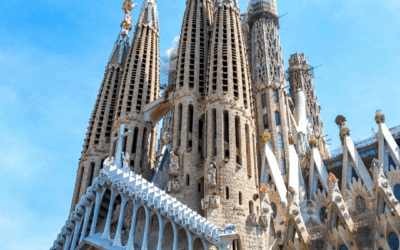In the heart of Baix Camp region, in Tarragona province, lies the city of Reus, a municipality that hides great architectural and cultural gems of the territory. These include, above all, the Modernist buildings that dominate the city centre, where Antoni Gaudí left his mark, and its excellent gastronomic offer that will surprise you in every one of its streets.
But this city has more than that. It has a feature that makes it unique in the world, its Museu del Vermut, an ideal place to learn in depth about this traditional drink, which has turned this town into the capital of vermouth.
Visit this magnificent building that includes great relics of this sector and discover everything you need to know about vermouth, its origin and marketing. Shuttle2Sun offers shared transfer services and private transfer services, low-cost and sustainable, so you can move to Reus, from Barcelona airport, Barcelona port, Reus airport, Girona airport and Camp de Tarragona AVE train station.
The origin of vermouth and its arrival in Spain
The origin of this type of drink dates to the Egyptian civilisation, in 1700 BC, when this population began to make a type of liqueur with a specific ingredient, wormwood, also known as absinthe, a medicinal herb with multiple curative properties, especially digestive.
Later, the use of this herb reached Greece, so that it continued to be used in the manufacture of medicinal concoctions, mixed with other elements, such as wine, aromatic plants and dittany, another healing plant that has had great uses in the world of traditional medicine since that time.
From the mid-16th century onwards, several authors began to write about a liqueur made from wine and wormwood in the Balkans, of German and Hungarian origin. A few centuries later, the drink was already known as “vermouth”. This word, in German “wermut“, means absinthe or wormwood.
This liqueur did not reach Spain until the 17th and 18th centuries, specifically in the area around Reus. This Catalan city had a very strong wine sector, which exported this product abroad in large numbers. Even so, it had major competitors: the cities of Paris and London, which also marketed this eau de vie.
This exponential growth in the trade of this liqueur made Reus a major reference point for the production of vermouth.

Consequently, in the 19th century, the city had a wide range of companies dedicated to its production. Today, this sector in Reus is known throughout the world as “Vermut de Reus“, and it still has three of the more than 50 brands that existed at the time: Iris, Yzaguirre and Miró.
First Vermouth Museum in the world
Because Reus was one of the most important cities in the marketing of vermouth over the years, the importance of this sector has been very present in its population.
If you want to know more about the history of vermouth in Reus, Shuttle2Sun takes you to this city, with its shared transfer services and private transfer services, low-cost and sustainable, available from Barcelona airport, Barcelona port, Reus airport, Girona airport and Camp de Tarragona AVE train station.
Museu del Vermut that we find today in the city of Reus began as a private collection of Juan Tàpias, who, in 1982, received as a gift from his father, Pablo Tàpias, a bottle of Cinzano, an Italian brand from Turin that has been a benchmark in the world of vermouth since the 18th century. From that moment on, Juan Tàpias began to collect numerous bottles of vermouth over the course of three decades, and today he has the largest collection in the world.

The museum has more than 6,000 items from up to 2,000 different brands, from bottles, posters, glasses, labels, postcards and invoices, among many others. Notably, the bottle of Cinzano given to him by his father is also on display. This magnificent collection was opened to the public for the first time in spring 2014 and can be visited free of charge from Tuesday to Sunday.
Modernist building
Very close to Plaça de la Sang, Museu del Vermut is located in Carrer Vallroquetes, in a modernist building dating from 1918, the work of the Catalan architect Pere Caselles i Tarrats, born in Reus, who was a municipal architect at the end of the 19th century and in the first decades of the 20th century, designing many of the buildings of that period.
This magnificent building served as a home and was the headquarters of Rius Gatell hat factory. Its façade stands out for its high arches that frame its balconies and doors. Today, it forms part of the architectural ensemble of the Route of Modernist of Reus.
A gastronomic experience
As well as learning about the origins of vermouth and enjoying the great jewels of the collection, this museum gives you the chance to taste the best brands in the area, accompanied by tapas and snacks of Mediterranean cuisine that add value to the gastronomic experience.
Cockles, prawns, olives, anchovies, potato chips, scallops and mussels are some of the high-quality products on the menu, as well as snails, potato omelette, patatas bravas, Galician-style octopus and assorted local cured meats, among many other options.
In the restaurant, you can also taste up to 120 types of vermouth, both national and international, as well as the three vermouths currently produced in Reus. Its wine cellar also has exquisite wines and cavas from local appellations of origin. Finally, you can’t end your gastronomic experience without finishing it off with one of their delicious desserts, which are sure to conquer your palate.
Make the most of Museu del Vermut de Reus! Remember that with Shuttle2Sun‘s shared transfer services and private transfer services, low-cost and sustainable, you can get to the capital of Baix Camp from Barcelona airport, Barcelona port, Reus airport, Girona airport and Camp de Tarragona AVE train station.



